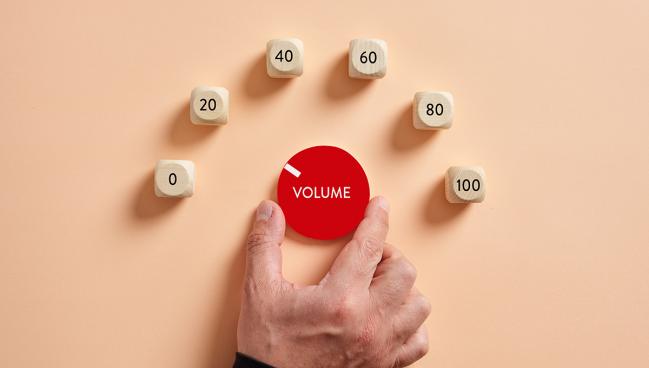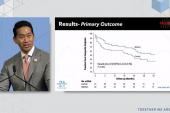Procedural Volumes Matter for VT Ablation
The multidisciplinary care required to treat these complex patients is most often found in higher-volume centers.

Directing patients selectively to centers performing higher volumes of ventricular tachycardia (VT) ablation may help reduce in-hospital complications following the procedure, an observational study suggests.
Despite patients being generally sicker at higher-volume centers, they had lower rates of in-hospital mortality, cardiac tamponade, and major bleeding requiring a blood transfusion compared with those treated at low-volume centers, lead authors Agam Bansal, MD, and Anirudh Nandan, MD (both Cleveland Clinic, OH), report in a study published online recently in JACC: Clinical Electrophysiology.
They estimate that one death, cardiac tamponade, or major bleed could be avoided for every 17 patients treated at a high-volume center instead of a hospital with low ablation volumes.
The findings confirm that VT ablation remains a high-risk procedure, senior author Pasquale Santangeli, MD, PhD (Cleveland Clinic), told TCTMD. “And since the risk is still high, I think it will be wiser for patients with VT to seek treatment [from] and to be referred to a high-volume institution that may be better equipped in terms of the infrastructure and also the procedural skills to deal with these patients with the optimal outcomes.”
Patients undergoing VT ablation are a complex group with high rates of comorbidities like heart failure and kidney dysfunction, he said, adding that the procedure itself is generally more challenging than others in electrophysiology (EP).
Although research has shown direct associations between higher procedural volumes and better outcomes for a variety of other cardiovascular interventions, such as transcatheter edge-to-edge repair for mitral regurgitation and catheter ablation for atrial fibrillation, the issue hasn’t been evaluated in a contemporary cohort of patients undergoing VT ablation.
To help fill that gap, the investigators turned to the National Inpatient Sample database, identifying 9,298 weighted hospitalizations for VT ablation performed at 612 hospitals across the United States. Mean patient age was 65.5 years and 23.5% were women.
Hospitals were divided into tertiles according to annual ablation volume—low (15 or less), medium (16 to 49), and high (50 or more). Patients treated at high- versus low-volume centers tended to be sicker, with higher rates of comorbidities like coronary artery disease, heart failure, and kidney disease.
After adjustment for baseline differences, treatment at a high- versus low-volume center was associated with lower rates of in-hospital mortality (2.9% vs 3.8%; adjusted OR 0.80; 95% CI 0.71-0.91), cardiac tamponade (0.9% vs 2.2%; adjusted OR 0.58; 95% CI 0.32-0.78), and major bleeding requiring a blood transfusion (2.2% vs 5.7%; adjusted OR 0.41; 95% CI 0.21-0.68). Findings were similar in the 39.8% of patients who had a prior implantable cardioverter-defibrillator.
There were no significant differences in acute ischemic stroke, acute kidney injury, or hospital length of stay based on procedural volume.
“Additional investigations are needed to determine whether the reported relationship between VT ablation procedural volume and in-hospital complications also extends to other relevant outcomes such as procedural success and postdischarge complications,” the authors write.
Support for Dedicated Centers
The researchers say the findings “provide evidence supporting the advice from international electrophysiological societies for dedicated centers with specific expertise in VT ablation.” Such guidance can be found in a 2019 consensus statement from the Heart Rhythm Society and international societies and a position paper from the French Society of Cardiology.
Santangeli pointed to the type of multidisciplinary care required to treat patients with VT to explain why higher-volume centers appear to have lower rates of postprocedural complications despite managing a sicker population.
“VT ablation patients require care before the procedure, usually with heart failure and other specialties, intraprocedurally and postprocedurally,” he said. So, it’s likely that high-volume hospitals have a better infrastructure for treating these patients in addition to the actual skill of the operators that do more procedures like this. The more procedures they do, the better the outcomes in general.”
Usha Tedrow, MD (Brigham and Women’s Hospital, Boston, MA), who was not involved in the study, agreed.
“VT catheter ablation is a team sport,” she told TCTMD, pointing to the need for physicians specializing in heart failure, anesthesia, renal disease, and other areas to help manage these patients.
On a broader level, the study “really does argue for centers of excellence to take care of these very sick patients, and I think it provides support to our EP colleagues that may want to enlist assistance from local hospitals that may be high-volume centers,” she said. “It could actually be a help to the hospitals that have lower VT ablation volumes to have this option to transfer patients to the higher-volume centers.”
In Europe, she noted, centers have used an approach in which patients with VT are stabilized at local hospitals and then transferred to higher-volume centers for more complex care, including ablation.
“I don’t know that it would make sense necessarily to try to train up a lower-volume center unless they were investing in the other things that go along with it, like the heart failure support and the specialized anesthesia support,” Tedrow said.
Santangeli said the use of newer ablation techniques, like pulsed-field ablation (PFA), may help minimize outcome differences between low-volume and high-volume centers. PFA has a larger ablation footprint, provides better lesion formation, requires less irrigation, and can be done in a more standardized way, he said.
“I think there is a hope that by making this more standardized and more efficient, low-volume centers will catch up with the high-volume centers in terms of the outcomes,” Santangeli said. “But of course it takes a village to take care of these patients. You need a true multidisciplinary [approach]. And unless you have the right infrastructure, I think you will still continue to see these differences between low-volume and high-volume centers.”
Todd Neale is the Associate News Editor for TCTMD and a Senior Medical Journalist. He got his start in journalism at …
Read Full BioSources
Bansal A, Nandan A, Sroubek J, et al. Impact of hospital VT ablation volume on post-procedural complications: argument for selective referral to high-volume centers. JACC Clin Electrophysiol. 2025;Epub ahead of print.
Disclosures
- Santangeli reports having received research grants and/or consulting fees from Biosense Webster, Medtronic, and Boston Scientific.
- Bansal and Nandan report no relevant conflicts of interest.





Comments